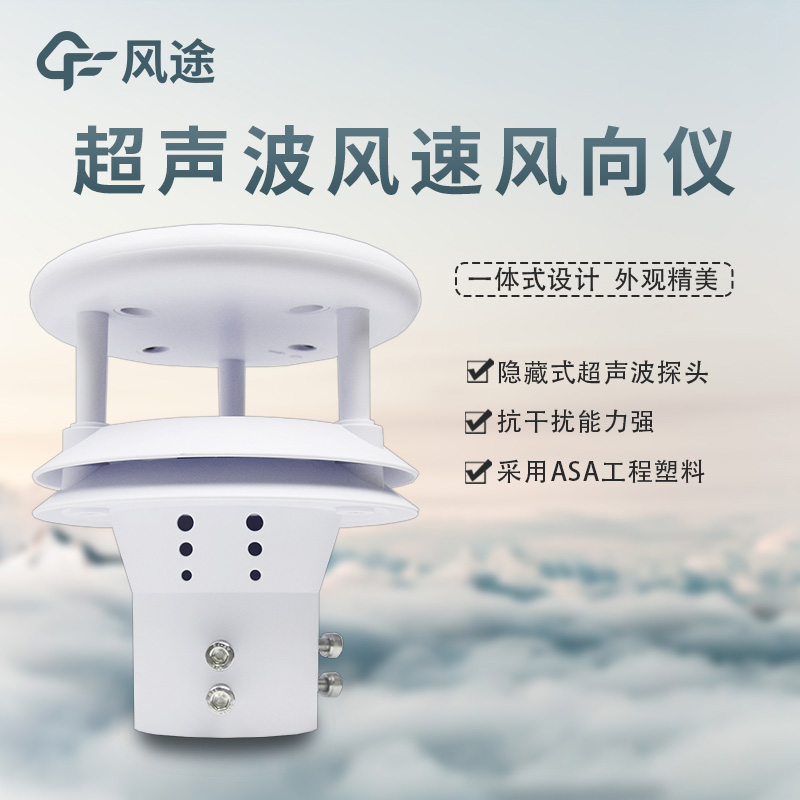Shandong Fengtu IOT Technology Co., Ltd
Sales Manager:Ms. Emily Wang
Cel,Whatsapp,Wechat:+86 15898932201
Email:info@fengtutec.com
Add:No. 155 Optoelectronic Industry Accelerator, Gaoxin District, Weifang, Shandong, China

Sales Manager:Ms. Emily Wang
Cel,Whatsapp,Wechat:+86 15898932201
Email:info@fengtutec.com
Add:No. 155 Optoelectronic Industry Accelerator, Gaoxin District, Weifang, Shandong, China
time:2024-04-15 08:38:26 source:Weather Station viewed:678 time
Wind speed and direction measuring devices were probably one of the first types of sensors to be developed in history. Since ancient times, knowing the speed and direction of the wind has been of great importance in many fields such as agriculture, navigation, and construction. This article will look at how wind speed and direction sensors work and describe the different types of such sensors currently on the market and how they are used in various fields. By reading this article, the reader will be able to gain a comprehensive understanding of wind speed and direction sensors.
The frame of a wind direction sensor generally mimics the shape of a traditional wind vane, featuring an indicator arrow that rotates as the wind blows the tail, thus visually indicating the direction from which the wind is coming. In order to improve the ability to sense changes in wind direction, these sensors also incorporate a diverse range of internal structures that are used to accurately determine and track the direction of the wind. The main classifications are as follows:
Electromagnetic wind sensors are designed using the principles of electromagnetism, and because of the variety of electromagnetic mechanisms involved, their structures also show diversity. Recently, some advanced electromagnetic wind sensors have begun to incorporate a gyroscope chip or an electronic compass as a core component, and such technological innovations have significantly improved the measurement accuracy of the sensors.
Optoelectronic wind sensors rely on an absolute Gray code disc as a core component and use photoelectric signal conversion technology to accurately output wind data through customised coding. These sensors provide accurate wind direction information through special coding and signal processing mechanisms.
Resistive wind direction sensors utilise a design principle similar to that of a sliding rheostat, where the measurement of wind direction is achieved by setting the polarity of the resistor value to correspond to the complete circumferential angle (360° and 0°). As the wind vane rotates with the wind blowing, the slider of the sliding varistor moves synchronously and consequently generates different voltage signals. By analysing these voltage changes, the wind direction orientation can be accurately deduced.
Ultrasonic wind speed sensors determine wind speed by measuring the change in speed of ultrasonic waves travelling through the air. When ultrasonic waves travel with the wind, they speed up; when they travel against the wind, they slow down. By this method, the sensor can calculate the wind speed. Also, because the speed of sound waves is affected by temperature, the sensor cancels out the effect of temperature changes by detecting ultrasound waves in both directions, resulting in a more accurate wind speed reading.
Ultrasonic wind speed sensors stand out because they are lightweight, have no mechanical moving parts, are robust and reliable, and require no regular maintenance or calibration. It provides measurements of both wind speed and direction. Users can select different wind speed units, data output frequencies and formats according to their individual needs.
As a wind speed and direction measurement device, the ultrasonic wind speed and direction meter has successfully solved the common problems of the traditional mechanical instruments, and is able to operate continuously and stably under various climatic conditions, so its application range is expanding. It is gradually becoming the preferred alternative to traditional mechanical anemometers.

What kind of equipment is tailwater monitoring equipment? It is a class of hydrological monitoring system that collects, organizes and analyzes various information in a water body. It has several characteristics as follows.1. it can automatically complete the whole process from the collection of raw...
Dissolved oxygen refers to molecular oxygen dissolved in water, usually denoted as DO, with the unit of mg/L. It is essential for the survival of aquatic organisms. If the concentration drops below 4 mg/L, fish may suffocate to death. When it is lower than 2 mg/L, the water body enters an anaerobic...
Vegetable greenhouse insulation performance is very good, so you can grow anti-seasonal vegetables in it. Vegetables and temperature are very closely linked, if the temperature is high, the photosynthesis of vegetables will be affected, resulting in leaf yellowing, aging and other problems; if the t...
In cities, there are some seemingly ordinary but crucial facilities - environmental Air quality monitoring stations, which are constantly keeping an eye on air quality.Air quality monitoring stations are distributed throughout the city. Some are located around residential areas, monitoring the air t...